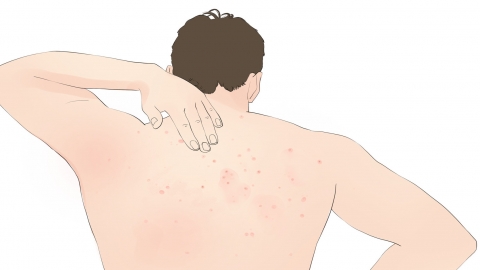What are the three conditions to watch out for when experiencing back pain?
Back pain is not necessarily a sign of illness, and if it is caused by a disease, it's not limited to just three possibilities. Back pain may be triggered by various medical conditions, and one should generally pay attention to diseases such as cervical spondylosis, lumbar disc herniation, ankylosing spondylitis, cholecystitis, and coronary atherosclerotic heart disease. If any abnormalities occur, prompt medical consultation is recommended. Detailed analysis is as follows:

1. Cervical spondylosis: After degenerative changes in the cervical spine, protruding intervertebral discs or bone spurs may compress nerve roots, causing pain that radiates to the back. This is often accompanied by neck stiffness and numbness in the upper limbs. It is more common among people who work at desks for long periods or frequently keep their heads down.
2. Lumbar disc herniation: When the annulus fibrosus of the lumbar intervertebral disc ruptures and the nucleus pulposus protrudes, it can compress surrounding nerves, leading to radiating back pain. Symptoms often include restricted腰部 movement and numbness or weakness in the lower limbs, which may worsen after excessive physical strain.
3. Ankylosing spondylitis: A chronic inflammatory disease, this condition may initially present with lower back pain. As the disease progresses, the pain gradually spreads upward. Stiffness in the spine is particularly noticeable upon waking and may temporarily improve with activity. It is often overlooked or misdiagnosed.
4. Cholecystitis: When the gallbladder becomes inflamed, pain can radiate via nerves to the right shoulder and right upper back, manifesting as persistent dull ache or intermittent colicky pain. It is commonly accompanied by nausea, vomiting, and tenderness in the right upper abdomen, and symptoms may be triggered by consuming greasy foods.
5. Coronary atherosclerotic heart disease: During myocardial ischemia or hypoxia, pain may radiate to areas such as the left shoulder and back. The pain is typically described as a squeezing sensation and is often associated with chest tightness, palpitations, and shortness of breath. Episodes frequently occur during physical exertion or emotional stress and require urgent medical attention.
Back pain should not be casually massaged or ignored. If pain persists without relief and is accompanied by symptoms such as difficulty breathing, limb numbness, or chest pain, immediate medical evaluation is necessary. In daily life, maintaining proper sitting and standing posture, avoiding prolonged static positions, and engaging in appropriate exercises for the neck, shoulders, and back can help reduce the risk of developing related conditions.







